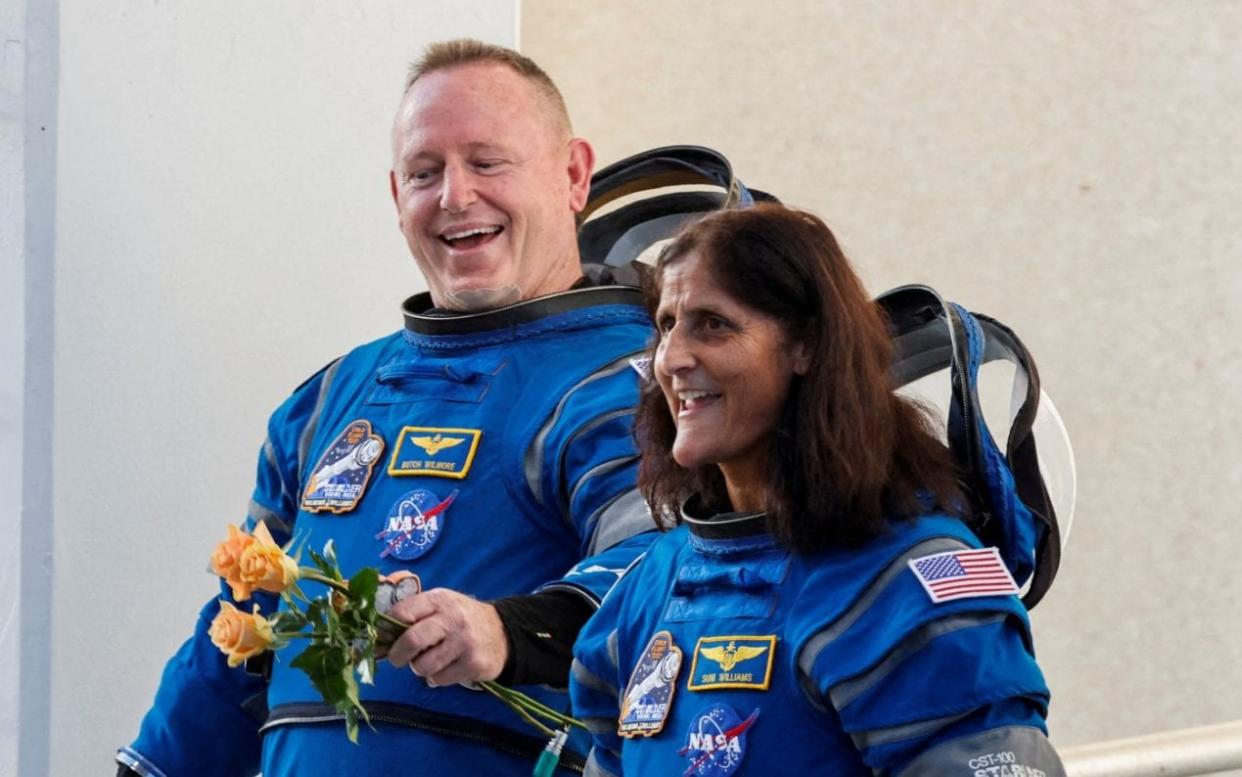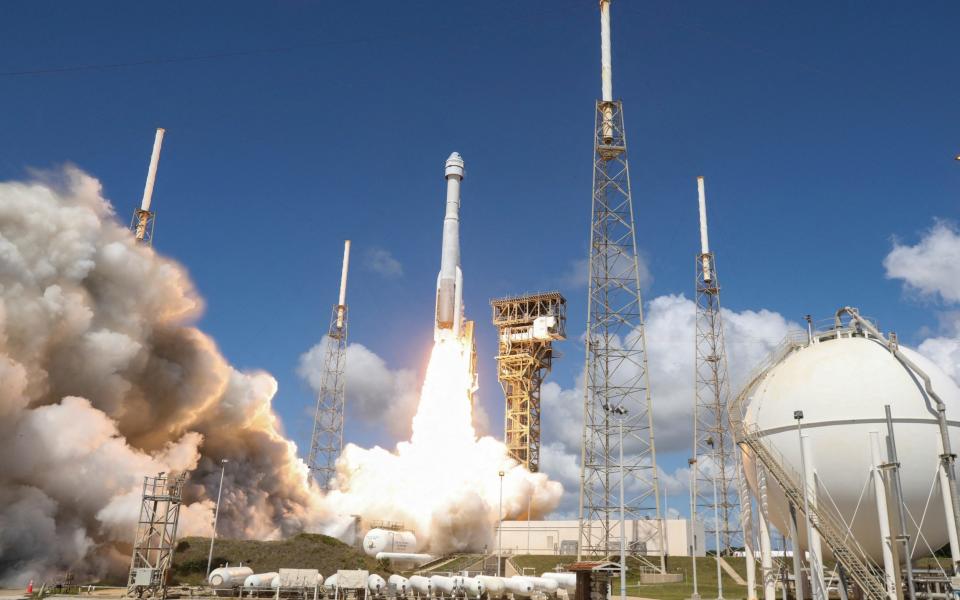Boeing faults leave two astronauts stranded in orbit

- Oops!Something went wrong.Please try again later.
- Oops!Something went wrong.Please try again later.
Two US astronauts will be left on the International Space Station (ISS) for almost two weeks longer than planned because of faults with the Boeing spacecraft designed to return them to Earth.
Nasa said Barry “Butch” Wilmore and Sunita Williams would not return to Earth on board the Boeing Starliner until June 26.
The vehicle has been plagued by helium leaks and thruster issues, in the latest setback to Boeing’s space programme which has been beset by delays and high costs.
The ISS mission was Boeing’s first crewed space launch after more than a decade of planning and two launches had been aborted at late notice.
Mr Wilmore and Ms Williams launched from Earth on June 5 and arrived on the ISS on June 6. They were meant to stay on the station for around seven days but their return to Earth had already been delayed until this week.
Five of the spacecraft’s thrusters were shut down by its computers as it neared the space station and four had to be switched back on, while its propulsion system has suffered a number of minor leaks.
The latest delay means that the pair will be on the ISS for more than twice as long as originally planned before the craft returns to Earth. The craft will land in New Mexico using parachutes.

While the faults are not critical and problems often emerge while testing spacecraft, officials from Nasa and Boeing plan to analyse the vehicle over the coming days before starting preparations for the return journey.
The setback is the latest blow to Boeing amid a safety crisis over its 737 Max aeroplanes after a door blew off a flight over Oregon in January, which has led to new scrutiny from regulators.
On Tuesday David Calhoun, Boeing’s outgoing chief executive, was hounded at a US Senate hearing by families of those killed in two previous incidents in which 737 Max jets crashed. Mr Calhoun apologised for their losses but said he was “proud” of the company’s safety record.
The ISS, which has a longer-term crew of four American and three Russian astronauts, has months’ worth of food supplies and the Starliner is able to remain docked for 45 days. If the astronauts’ return to Earth is delayed further they are likely to leave on July 2.
“I think we’re taking our extra time, given that this is a crewed vehicle, and we want to make sure that we haven’t left any stone unturned,” Nasa’s Steve Stich told a press conference.
“So far, we don’t see any scenario where Starliner is not going to be able to bring Butch and Suni home.”
Boeing’s Starliner programme is meant to provide competition to Elon Musk’s SpaceX, which has been used to ferry astronauts to the ISS since 2020. Previously, Nasa had used Russian-made spacecraft.
The company has lost more than $1.5bn (£1.2bn) on the project to date. It is due to complete six Nasa missions under a $5bn contract awarded in 2014.

